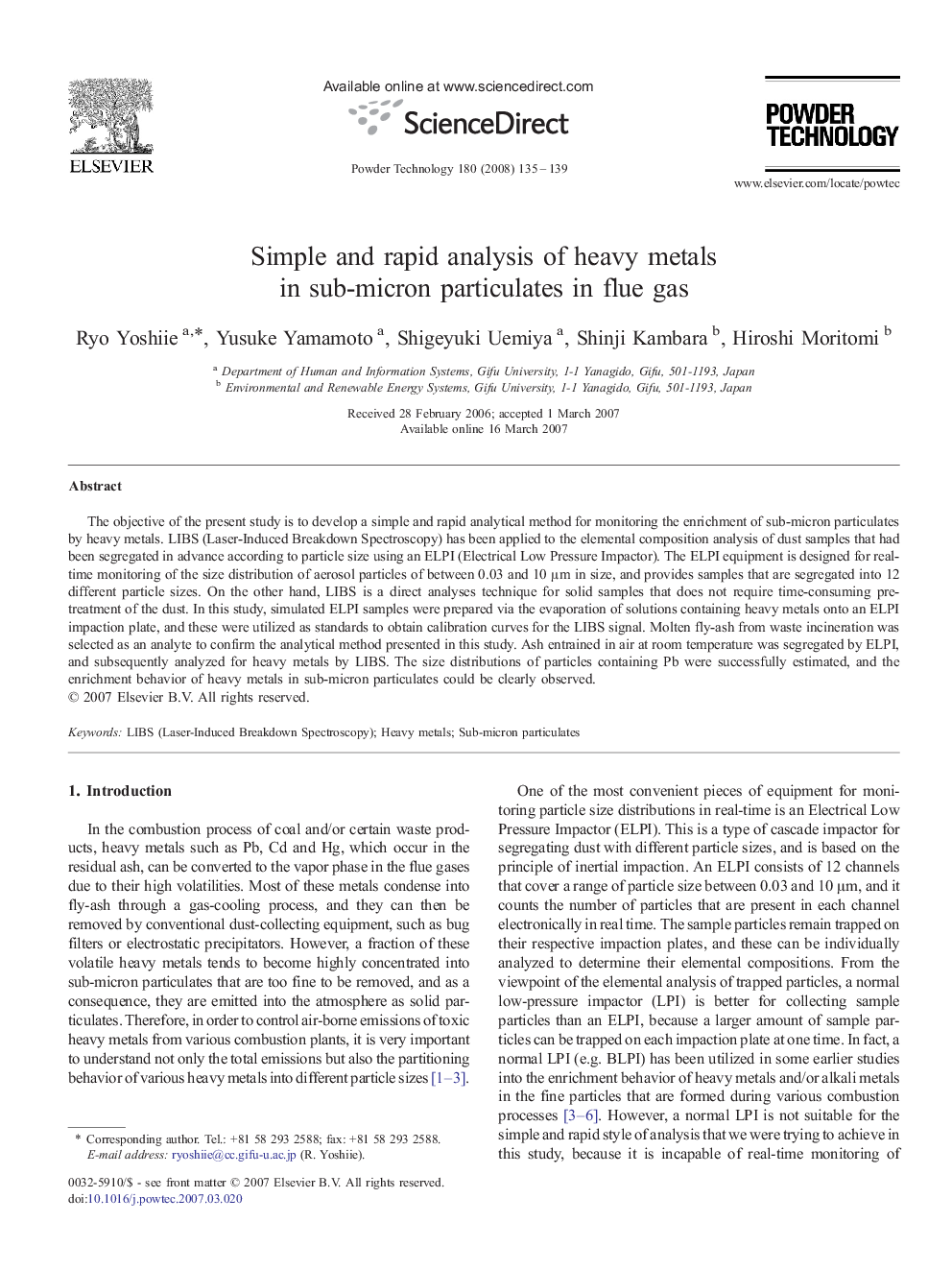| Article ID | Journal | Published Year | Pages | File Type |
|---|---|---|---|---|
| 238736 | Powder Technology | 2008 | 5 Pages |
The objective of the present study is to develop a simple and rapid analytical method for monitoring the enrichment of sub-micron particulates by heavy metals. LIBS (Laser-Induced Breakdown Spectroscopy) has been applied to the elemental composition analysis of dust samples that had been segregated in advance according to particle size using an ELPI (Electrical Low Pressure Impactor). The ELPI equipment is designed for real-time monitoring of the size distribution of aerosol particles of between 0.03 and 10 μm in size, and provides samples that are segregated into 12 different particle sizes. On the other hand, LIBS is a direct analyses technique for solid samples that does not require time-consuming pre-treatment of the dust. In this study, simulated ELPI samples were prepared via the evaporation of solutions containing heavy metals onto an ELPI impaction plate, and these were utilized as standards to obtain calibration curves for the LIBS signal. Molten fly-ash from waste incineration was selected as an analyte to confirm the analytical method presented in this study. Ash entrained in air at room temperature was segregated by ELPI, and subsequently analyzed for heavy metals by LIBS. The size distributions of particles containing Pb were successfully estimated, and the enrichment behavior of heavy metals in sub-micron particulates could be clearly observed.
Graphical abstractLIBS has been applied to the elemental composition analysis of dust samples segregated according to particle size using an ELPI in advance. Molten fly-ash from waste incineration was selected as an analyte. The size distribution of particles containing heavy metals was successfully estimated, and the enrichment behavior of Pb in sub-micron particulates could be clearly observed.Figure optionsDownload full-size imageDownload as PowerPoint slide
